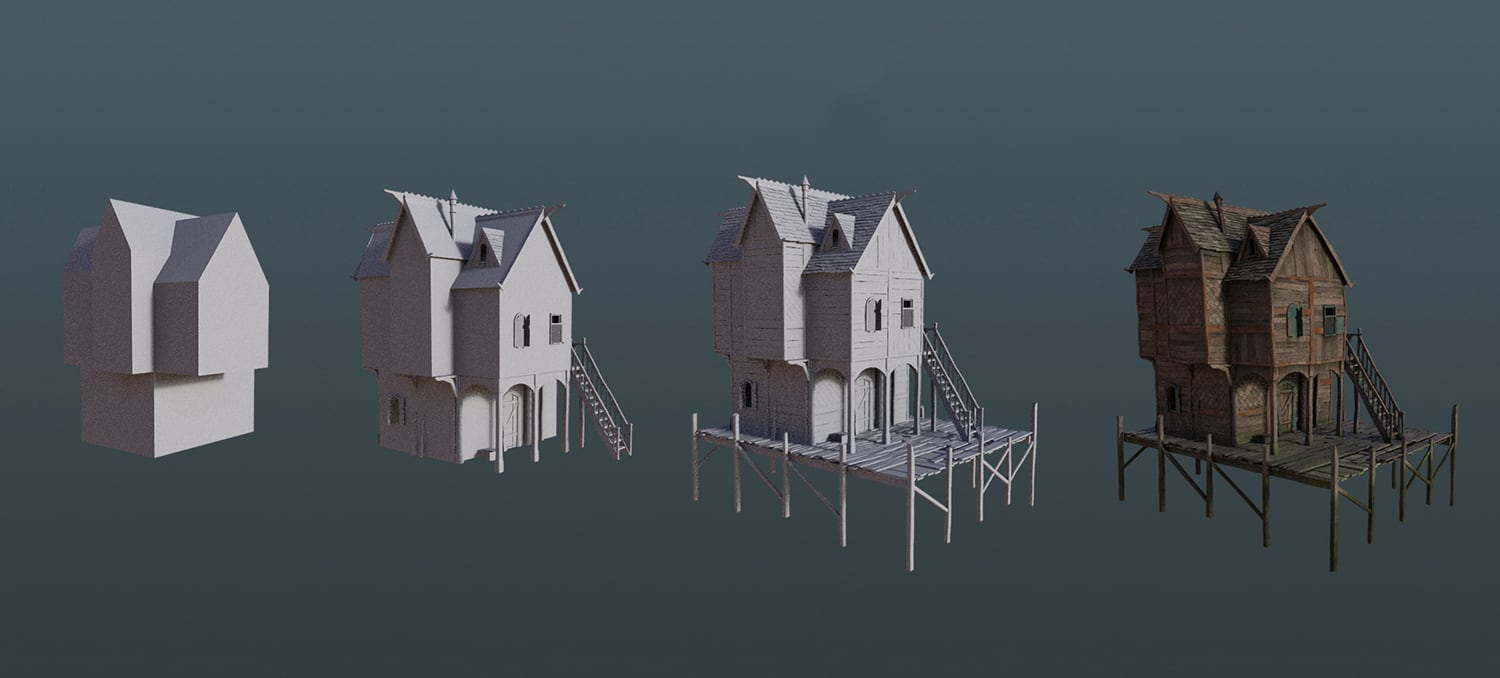Anastasia Opara, Procedural Lake Village (2016)
This project proceduraly generates 3D-models of stylistic, fully-rendered buildings which are all thematically, tonally consistent but structurally unique. The produced objects look as if they could be used as assets for a video game, and their implementation could greatly reduce the amount of time which goes into creating immersive, unique gaming environments. I admire how well-rendered each of the iterations are, and how each of them look intentionally structured, as if made by a human. Each building is visually unique while stylistically homogenous, giving it a medium-low information complexity and a medium effective complexity. I know that the algorithm was made in Houdini, a 3D animation software which emphasizes procedural generation. The procedure which Opara utilises includes four primary steps: (1) creating the sillhouette of the building, or blocking out its overall shape; (2) adding common elements such as doors, windows, chimneys, staircases, etc. (3) carving in wood patterns into the faces of the buildings, and (4) texturing, coloring, and shading, as well as slightly warping the house to appear crooked. Opara implements many restrictions, but allows for variety through the use of randomised variables which determine which elements will be included and in what fashion. I am impressed by this project's potential to save game developers a lot of time and money, while maintaining the same integrity of quality, and I am intrigued by how Opara's procedure reflects the process of building a house.
On her website, Opara provided an interesting quote which concerns how software is capable of subverting its creator's expectations, and therefore appearing to have original ideas of its own: "One of the most satisfying part was, when generating the final lake houses, the network would give me unexpected, but very creative results that I simply didn't anticipate or take into account when writing the rules. And those outcomes still had all the rights to exist and, in fact, looked extremely curious. If that was a person, who built the house, I would praise him for originality! Does it mean that the systems can be creative within the constraints that we give them? I like to think of Houdini as a student, and you are a teacher, who can put any information in a student's head and it will be perceived with 100% accuracy (for the worse or the better). And, as many teachers know, students have a tendency to really surprise you with the things they come up with."
Link to the Project: https://www.anastasiaopara.com/lakevillage
